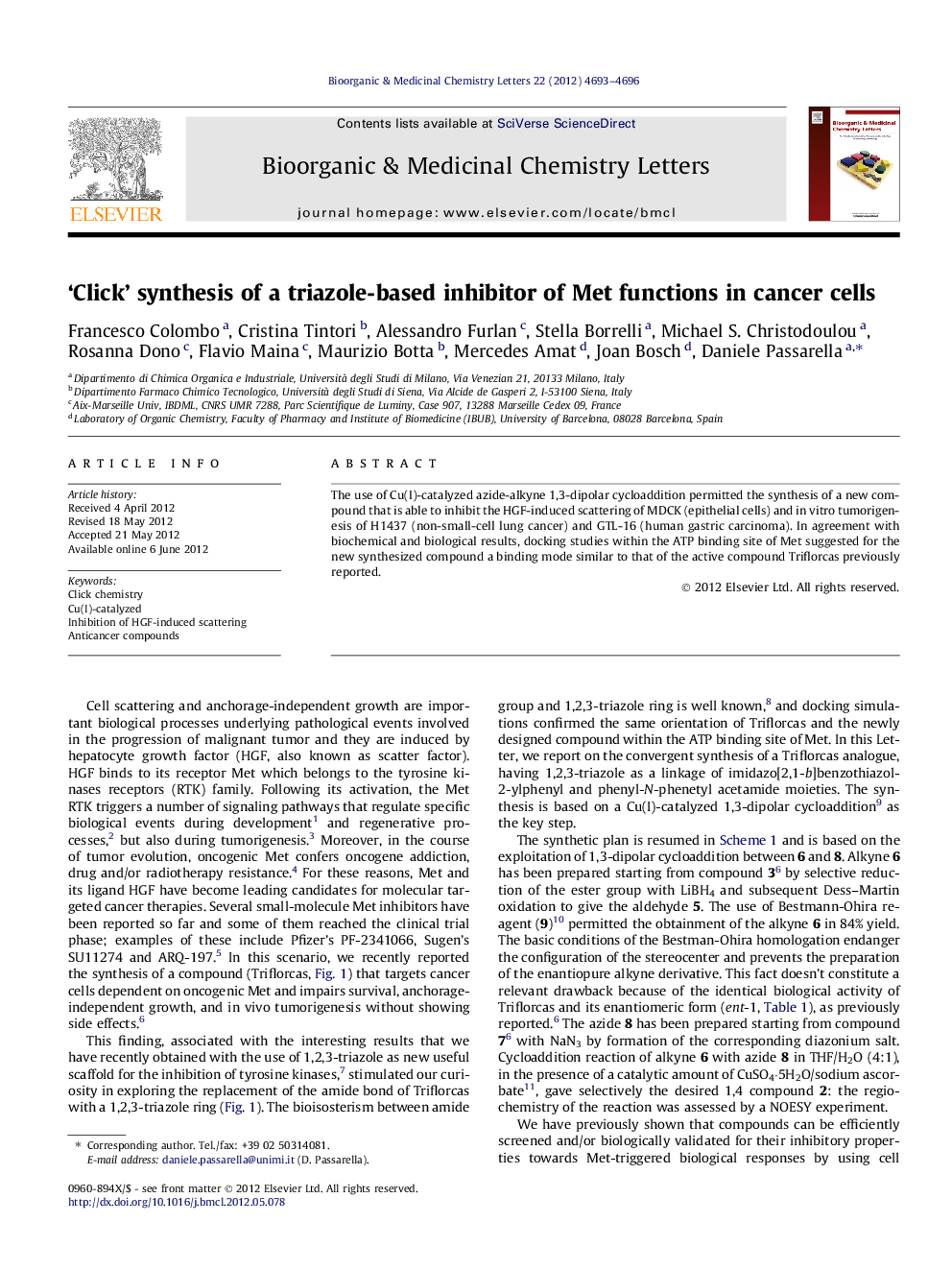| Article ID | Journal | Published Year | Pages | File Type |
|---|---|---|---|---|
| 1369622 | Bioorganic & Medicinal Chemistry Letters | 2012 | 4 Pages |
Abstract
The use of Cu(I)-catalyzed azide-alkyne 1,3-dipolar cycloaddition permitted the synthesis of a new compound that is able to inhibit the HGF-induced scattering of MDCK (epithelial cells) and in vitro tumorigenesis of H1437 (non-small-cell lung cancer) and GTL-16 (human gastric carcinoma). In agreement with biochemical and biological results, docking studies within the ATP binding site of Met suggested for the new synthesized compound a binding mode similar to that of the active compound Triflorcas previously reported.
Graphical abstractFigure optionsDownload full-size imageDownload as PowerPoint slide
Keywords
Related Topics
Physical Sciences and Engineering
Chemistry
Organic Chemistry
Authors
Francesco Colombo, Cristina Tintori, Alessandro Furlan, Stella Borrelli, Michael S. Christodoulou, Rosanna Dono, Flavio Maina, Maurizio Botta, Mercedes Amat, Joan Bosch, Daniele Passarella,
